#i can't believe this entry is finally done hallelujah i'm free
Text
“True Peace” and “Total Pacifism”:
the Peacecraft Ideals & the Point of it All
(buckle up, this is a long one)
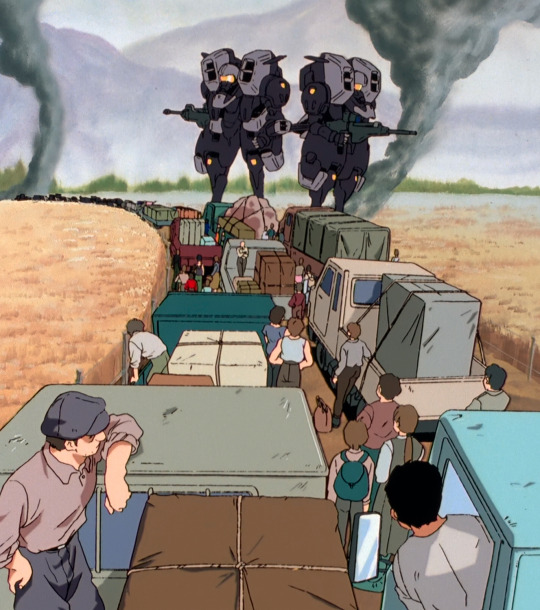
Capital “P” Peace is by far the most crucial concept in Gundam Wing.
It is a simple word that’s tossed around a lot and it pulls far too much weight for one little noun. The range of topics covered beneath this straining umbrella of a term includes everything from “a general sense of unthreatened well-being”, to “unilateral demilitarization and disbandment of global military rule”. The fault here lies not with translation difficulties or simplification for the ease of dubbing; real-world discussions of pacifism and peace are plagued by a lack of nuanced vocabulary as well. Alas, in this instance, it is the English language itself that has conspired to prank us.
Nevertheless, while overuse of the word is certainly frustrating at times, I find that when broken down and decoded, what may appear to be a lot of vague, flowery statements about the Virtues of Peace™ is actually a strategic political debate.
…Mostly. This is complicated somewhat by the fact that there are a significant number of characters for whom making flowery statements about the Virtues of War™ is a hobby and a way of life. So yes, indeed, sometimes convincing someone with Extreme Eyebrows that mankind can find value outside of eternal, violent conflict IS a priority that must be considered.
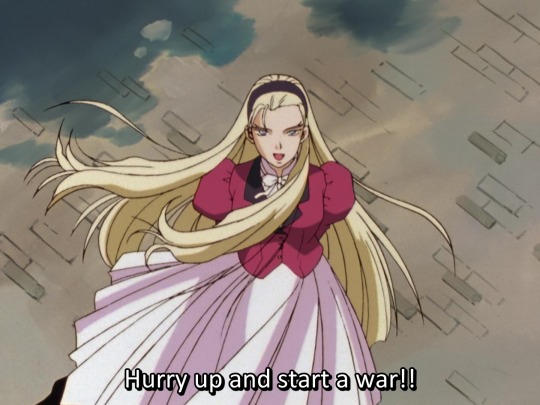
Part of why I think Gundam Wing had such a profound effect on its young audience when it came out is that it managed to cover most of an Intro to Ethics course in 49 episodes and a movie. It was a lot of kids’ first exposure to philosophy and politics, and it communicated its ideas by way of exciting robot fights and aspirationally cool characters. Gundam Wing made it easy to care about complex, abstract ideas and how they might affect the world– ideas that, at least for American audiences in the early 00’s, were well in advance of what they were likely to encounter in public school.
…Now, maybe you read that and found yourself thinking: “Come on, ‘peace is better than war’ is a pathetically simple dichotomy that no one needs to seriously debate”-- and I would love to give that to you. But as an American, I must beg you to consider that in the USA we have been trying to decide for decades whether an average of 75 school shootings per second is enough school shootings to consider implementing basic gun control.
Never underestimate the ability of a simple idea to become so polemicized that it becomes impossible to talk about or resolve without a total public paradigm shift– and now consider that learning how to cause a paradigm shift is exactly what Gundam Wing is all about.

--There Is No War in A.C. 195--
For the majority of cases, when a character talks about war or peace, they mean specifically “between the Earth Sphere and the Space Colonies”-- as in, “an end to the conflict we have been embroiled in for roughly 20 years”.
This rather misleadingly makes it sound as though the Alliance is at war with the Colonies– but in AC 195, the Colonies do not have a military to go to war WITH. The Colonies aren’t engaged in a war with the Earth Sphere Alliance, they are under military occupation by the Earth Sphere Alliance.
When the Gundams first come to Earth and begin attacking the Alliance/OZ, the immediate question is: is this a declaration of war by the Colonies?
The burden continuously falls on the Colony ambassadors to prove that the Gundams are not politically associated with them. For all intents and purposes, they consider the retaliation of the Gundams to be acts of terrorism– which they must! Because otherwise they will indeed be at war with Earth, something the Colonies absolutely, 100%, definitively cannot afford. The Colonies are space bubbles. They can be popped. They can be blockaded. Earth provides the Colonies with the majority of their resources; declaring war against it would be insanity.
All this makes “peace with the Colonies” a very lopsided affair. Since officially speaking the Colonies have no military power, and since the nations of Earth that had previously allied with them were wiped out, negotiating for peace would require placing full trust in the Alliance. In other words, it would mean relying on the oppressor to stop oppressing purely as an act of goodwill.
This is why the “Peace Negotiations” proposed by the Alliance military leaders was at best a naive gesture that would have broken down at the first conflict of interest. The Alliance was responsible for the oppression of the Colonies to begin with– choosing to withdraw is a matter of their convenience; there is nothing to negotiate, because they have all the power. At worst, its “diplomacy” would simply be a farce designed to put a benevolent face on continued exploitation.
–Which is exactly what happens under OZ’s rule: “peace” is obtained in name only, while nothing about the power dynamic changes.

Here’s the trouble with settling for peace by any means: Every single military organization in Gundam Wing expresses a desire for world peace.
The Earth Sphere Alliance Military began as a peace-keeping measure. OZ claims it is correcting the Alliance’s failure to bring about world peace. Romefeller insists that it will bring about peace through a firm, authoritarian hand guided by the traditions of the ruling class. White Fang asserts that earth is responsible for all wars, and that peace can only be attained by destroying it.
There are many, many roads to “peace” that end in totalitarianism, to peace removed from liberty, to Pax Romefeller. In practice, White Fang’s approach would probably be the most effective at bringing about total, ever-lasting peace– if the result is all you care about, then sure, mass-extinction is one way to go!
But assuming we value peace because we ALSO value life and happiness and art and puppies and things like that, then we need to set the acceptable standard for peace somewhere above the eternal calm of a dead universe.
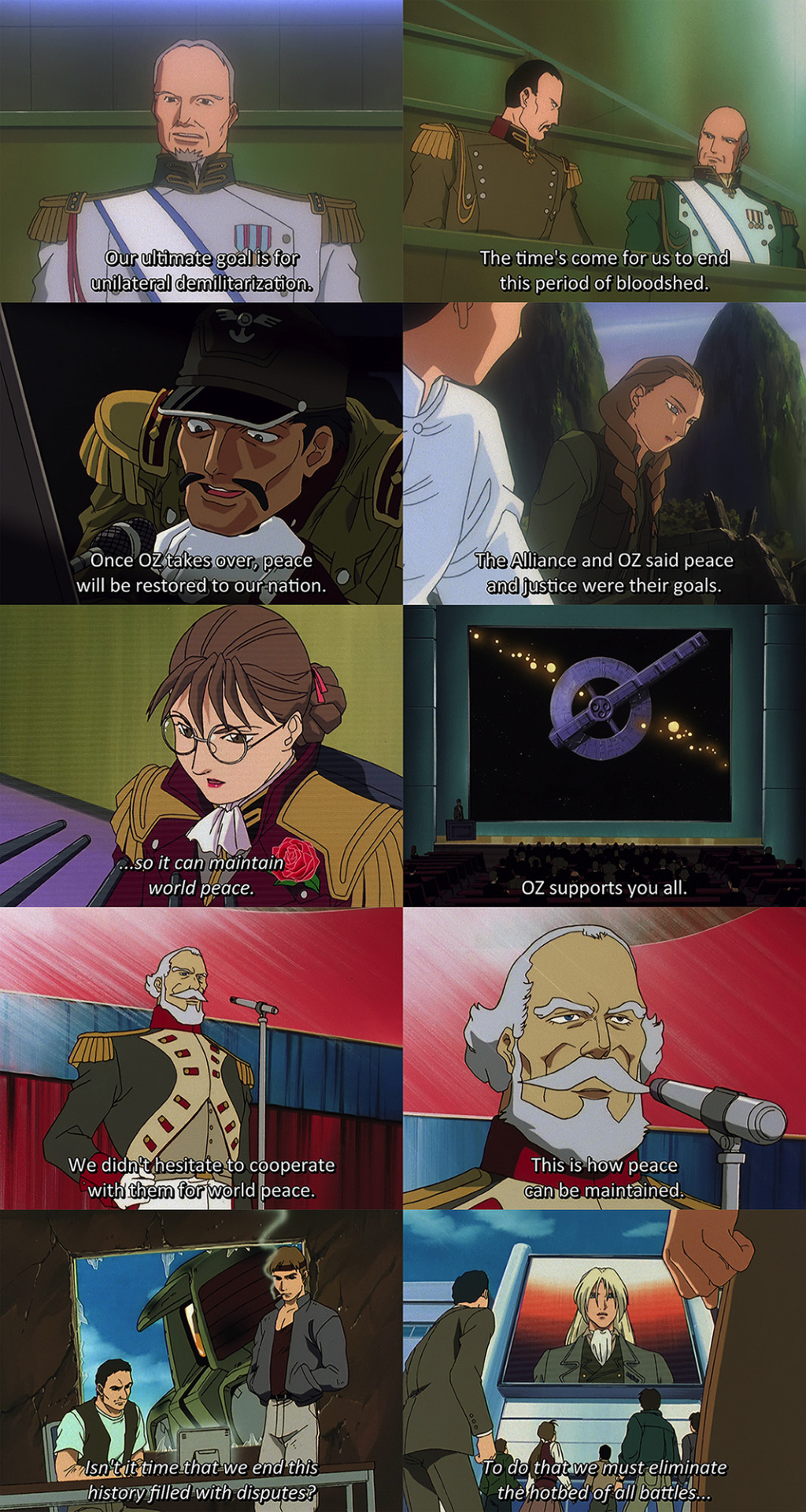
--The Peacecraft Ideals--
So, having established that “world peace by any means and any cost” is not a reasonable, humane, or moral outcome to strive for, we must consider “True Peace” to be a different outcome from “peace”.
As defined by Relena and ideals of the Sanc Kingdom, True Peace must be non-exploitative. It must require no threat of violence to enforce. To establish it, the means of military conflict must be removed and abolished, and the sources of human dispute must be addressed by means other than force of arms. Most importantly, True Peace requires fostering a transformational attitude towards peace– one that empowers the collective will of the people to both achieve and maintain peace.
To summarize, the Peacecraft plan of action is: 1) Remove weapons that are the means of military conflict, 2) Remove the primary sources of military conflict, and 3) unite people in the desire for peace, and to uphold peace.
It’s this last point that is so crucial to events that the entirety of the final narrative arc hinges upon answering the all-important questions: how does one foster the desire for peace, and bring about a massive paradigm shift that can change the course of history? and what price is one willing to pay for it?
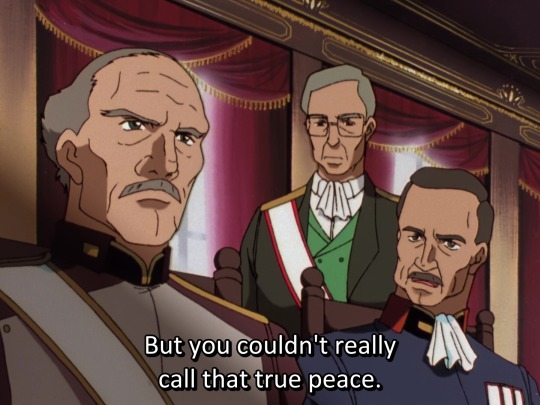
“Absolute pacifism [which is understood as a maximal and universal rejection of violence and war,] is an ideal. Some versions of absolute pacifism go so far as to abjure the idea of personal self-defense. Other absolute pacifists may allow for personal self-defense while rejecting the impersonal and political violence of war. Almost every defender of absolute pacifism recognizes the difficulty of attaining the absolute ideal.”
“The world often presents us with difficult ‘kill or be killed’ choices as in the question of self-defense or war. Absolute pacifists may hold that it is better to be killed than to kill. But such a choice may be impossible for many of us to make. Pacifists will often argue that this way of describing a situation—as one where the choice is ‘kill or be killed’—usually presents us with a false dilemma: often there are other nonviolent alternatives to either killing or being killed. But when presented with such a stark choice, absolute pacifism may require self-sacrifice.”
--“Pacifism”, Stanford Encyclopedia of Philosophy, Andrew Fiala, 2006
--Pulling back to real-earth for a moment: there is a wide and continuous spectrum of ethical, religious, political, and practical attitudes to be found spanning the distance between Absolute and Conditional forms of pacifism, but despite its similar name, the Total Pacifism of Gundam Wing is not a synonym for Absolute Pacifism:
There is no indication that Relena is against self-defense, nor that she insists on absolute non-violence; she’s a staunch defender of the Gundam pilots, after all, and they’re practically the face of violent resistance. She admits that in past history there were conflicts that could not have been avoided, and that one cannot maintain civilization without some degree of enforcement of principles. We can safely assume (especially after her change of heart in Endless Waltz) that she supports the proportional defensive reaction of people who are resisting oppression. But killing people is not, or at least very rarely, justifiable in her worldview (allowing for the fact that both Relena’s character and her philosophy evolve over the course of the series), and warfare never is.
“Peaceful intercourse is easily rejected by those who assert the benefits of the martial values, who claim that a war brings out the best of people and of a society, that wars heighten humanity s perception of itself in the great existentialist quest between life and death, that war relieves the monotony of consumerism and so on.
This highlights one of the most difficult aspects of pacificism, that the goal of peace and of tranquility may not suffice human nature. The persistent nagging of bellicosity, of adventure, personal and collective glory, whether it derives from something genetic or culturally deeply embedded in most societies, remains an easily revitalized clarion call to war. The culture of peace is often very shallow, taking many generations to produce, and even then can be swiftly eroded with atavistic rhetoric.”
--“Pacifism”, Internet Encyclopedia of Philosophy, Alexander Moseley
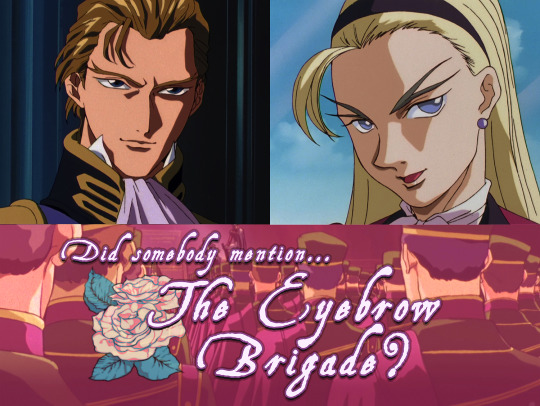
(...Remember what I said about needing to convince certain people that mankind can find value outside of eternal warfare?)
Relena’s Total Pacifism is primarily an anti-military political stance; it is only secondarily a philosophy of nonviolence. Over the course of the series, Relena confronts over and over again the notion that many people are drawn to the act of fighting for various reasons, ranging from the vindictive to the instinctual. It is not an impulse she shares or understands, but she recognizes that it exists. She is ready to admit that even within Total Pacifism, a world totally without violent desires may be impossible– but it is not necessary that people accept a world where those desires give rise to military conflict.
–Something that is worth noting is that the Peacecraft’s plan for total pacifism does not include a rubric for solving conflicts that do arise, only how they should NOT be solved.
In the series, the single method that Relena espouses for solving disputes is through “dialogue”-- something that is repeatedly pointed out to be a flawed and inadequate form of conflict resolution. “Dialogue” cannot solve all of humanity’s problems, that is unquestionably true– but neither is it a bad place to start as a baseline. More to the point, of all the possible conflicts and struggles that humanity might encounter in the vast expanse of the future, it’s futile to try and codify the best method of solving all of them based purely on abstract theory and best guesses.
Again, the Peacecraft ideal is only secondarily a philosophy; its primary goal is not to tell people HOW to solve all future problems, its goal is to solve ONE problem, and that one problem is war.
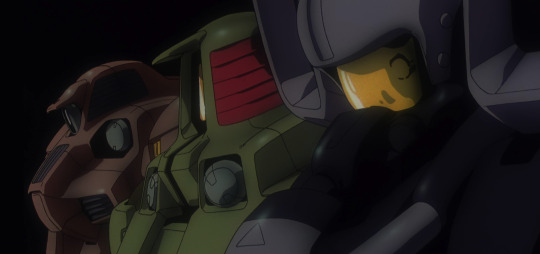
“Disarmament” Means Mobile Suits
Removing the possibility of military conflict is a preliminary for Total Pacifism, and therefore it is necessary to implement universal disarmament– and “disarmament” as it pertains to the conflicts of AC 195 means primarily the discarding and prohibition of Mobile Suits.
The reason for this is not simply because Mobile Suits are dangerous weapons. After all, Mobile Suit warfare is hardly the biggest or baddest type of war the human race has developed– leveling a city with Mobile Dolls couldn’t possibly be worse for people than leveling a city with an atomic bomb– the main thing Mobile Suits allow people to do is fight wars using infantry in space.
Not only do Mobile Suits allow for space combat, they also grant very granular control of combat zones and civilian populations without substantial risk to the troops– which is great if you’re trying to enforce military rule in the Colonies. Space fortresses and missile satellites are also threats of course, but where a missile attack would simply destroy or damage a Colony, Mobile Suits allow military forces to take direct control of it, the area around it, its resources, its populace; everything, inside and out. This is why disarmament of MS has to be a primary concern for de-escalating conflict between Earth and the Colonies: as long as Mobile Suits are still in the picture, the potential threat of domination by the Earth Sphere remains, and nobody in the Colonies is going to relax.
The Other Pacifists of A.C. 195
“Law never made men a whit more just; and, by means of their respect for it, even the well-disposed are daily made the agents of injustice. A common and natural result of an undue respect for the law is, that you may see a file of soldiers, colonel, captain, corporal, privates, powder-monkeys and all, marching in admirable order over hill and dale to the wars, against their wills, aye, against their common sense and consciences, which makes it very steep marching indeed, and produces a palpitation of the heart. They have no doubt that it is a damnable business in which they are concerned; they are all peaceably inclined. Now, what are they? Men at all? or small movable forts and magazines, at the service of some unscrupulous man in power? […]The mass of men serve the State thus, not as men mainly, but as machines, with their bodies. They are the standing army, and the militia, jailers, constables, posse comitatus, &c. In most cases there is no free exercise whatever of the judgment or of the moral sense; but they put themselves on a level with wood and earth and stones; and wooden men can perhaps be manufactured that will serve the purpose as well.”
—“On the Duty of Civil Disobedience”, Henry David Thoreau
The Sanc Kingdom is not the only proponent of pacifism in the Earth Sphere.
In the Autonomous Mountain Region of former China (helluva mouthful, you'd think they'd have given themselves an actual name), for instance, we’re shown another civic leader who gathers support for demilitarization and objects to Alliance occupation. Like the Colony leader Heero Yuy and King Peacecraft before him, this unnamed leader is assassinated, and his independent nation taken over by the local branch of the Alliance military.
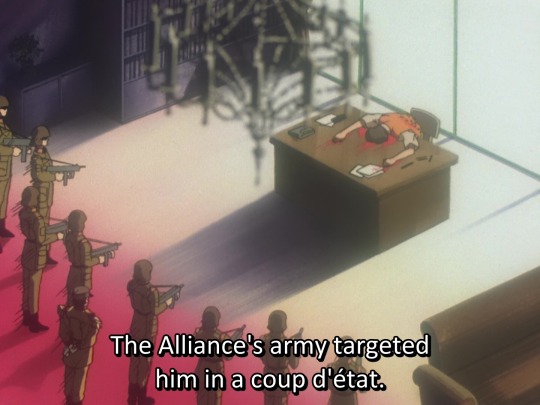
It’s only a brief footnote in the series, but it’s important because it demonstrates that the dream of pacifism is not dead on Earth, despite how often it has been violently silenced by the prevailing world order. It speaks to how powerfully the message spread by Yuy and the Sanc Kingdom resonated with people that their ideals continue to generate new martyrs; we see it also in the nations surrounding the Sanc Kingdom who are willing to stand up against Romefeller and refuse to participate in military affairs.
The existence of these nameless “Autonomous Regions” and “Independent Nations” shows us that there is at least some degree of successful resistance against the Earth Sphere government (whether that be the Alliance or OZ); it’s also clear by statements from Duke Dremail that these independent entities are considered a tremendous threat.
In a system of global military rule, to renounce the military is to essentially declare one’s withdrawal from the existing government– something that surprisingly doesn’t elicit immediate reprisal under Romefeller’s oligarchy, at least when the seceding nations offer no armed resistance.
But the rise of pacifistic nations on earth is nevertheless regarded with as much suspicion and hostility in A.C. 195 as it was during the Sanc Kingdom’s first bid for Total Pacifism, and while Romefeller, unlike the Alliance, is either unwilling or lacks the unilateral authority to quash dissenters without justification, it is more than willing to manufacture justifications to remove political rivals from the playing field. But what’s important is that they still need that manufactured justification– Romefeller, like any authority structure, requires a certain level of assent and cooperation in order to maintain power.
The practical implication of multiple countries withdrawing from the Earth Sphere and/or refusing to support the global military, is that the Earth Sphere government has fewer nations to tax and draw on for resources or support, and more places where rebel elements can take refuge. In the long run, a sufficient number of simultaneously defecting nations could mean the collapse of global military rule itself.
Armies and weapons and soldiers don’t spawn automatically on a map. Everything has to come from somewhere, and a global military organization needs to be supplied and maintained by the globe.
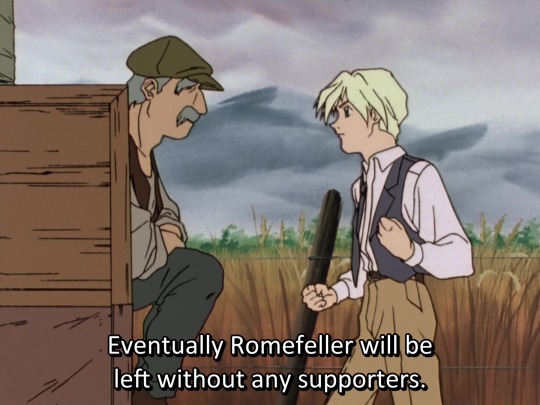
Whatever the Alliance’s policies were, it’s safe to assume that OZ/Romefeller inherited and maintained many of them, partly because they were always part of the decision making process, and also because hey, why let a perfectly good global bureaucratic infrastructure go to waste? The Alliance began as a cooperative global peace-keeping initiative; at its root, it was developed from international bureaucracy, rather than an imposed dictatorship. Even after it became the dominating world government, that underlying bureaucratic structure surely remained to some extent. National borders were still recognized, at least as an organizational convenience; the Alliance relied on taxes from the various recognized nations under their control (including the Colonies), as well as the heavily-incentivized funding of the arms industry, tied to the wealthy estates of the Romefeller Foundation, many of whose members were leaders or rulers of different nations themselves. It’s also likely there was some sort of draft for citizens of the Earth Sphere and the Colonies.

Why does this matter? Because in non-violent resistance, particularly in civil disobedience and non-compliance, it’s necessary to find ways to gain leverage that don’t involve offensive combat. In the case of resisting a military oppressor, learning what conditions allow the military to continue operating, and how to disrupt that operation, is of key importance.
Outside of Earth, we’re shown another notable example of disruptive resistance from the Winner family– adamant pacifists themselves, though their sole male heir, Quatre, broke with tradition and chose to fight against OZ using the Gundam Sandrock. The Winner family is in charge of several major natural resource satellites, a primary source of supplies for the adjacent Colonies. When those Colonies allied themselves with OZ and began arming themselves in spite of their past commitment to pacifism, and in spite of OZ’s quite recent manipulative and violent suppression of the Colonies, the Winner family patriarch protested this move vehemently. When it was clear the now-militarizing Colony would continue supporting OZ and intended to begin manufacturing weapons on the natural resources satellite, Mr. Winner removed his support from the Colony– both ideologically and physically, by decoupling the resource satellite; a move that cost him his life at the hands of OZ.

A Glass Kingdom Throws No Stones
The Sanc Kingdom’s existence is based on hope.
It assumes peace (i.e. a state of goodwill and non-conflict) is the natural state humanity longs for, the only condition it can truly flourish in, and therefore it is in everyone’s best interest to pursue. Even those who advocate in favor of war would eventually see the pragmatic benefit of peace– wars are costly, and demand a constant supply of resources and humans to throw into it. If everyone simply acknowledged these truths, True Peace ought to be the inevitable outcome.
This position is largely (but not universally) viewed as naive, idealistic, and ultimately hopeless. Even its proponents acknowledge that the Sanc Kingdom’s ideals are built on trust and air– but they maintain that their belief in that trust is nevertheless of utmost value, for inspiring others to realize what might be possible if that trust were universal.

The Sanc Kingdom’s one defense is its total lack of offense. By removing itself as a potential threat and offering no resistance or antagonism to the ruling power, it minimizes the incentive for that ruling power to overrun and destroy it– but there are no guarantees.
Relena pragmatically warns her students that the Sanc Kingdom will never be a safe place until Total Pacifism is adopted globally. She herself is prepared for the likely scenario that advocating for peace will cost her her life. The tenuousness of the kingdom’s position is fully acknowledged by all– how could it not be? The current Sanc is built on the ruins of the previous generation’s bid for pacifism.
Despite this, the kingdom’s doors are open to all; Relena maintains a supremely generous view of mankind that gives everyone the benefit of doubt, continuing within the same logic that non-aggression will be met with non-aggression. Perhaps more accurately, this policy is her way of insisting that this is how peaceful interactions ought to be; despite the considerable risk they incur, both she and her kingdom stand defenseless in a world of grasping military powers, wielding only her dignity, her public visibility, and a conviction that everyone is capable of choosing respectful conduct.
The Sanc Kingdom is perfectly set up for martyrdom– and it is a very short ride before it gets there.
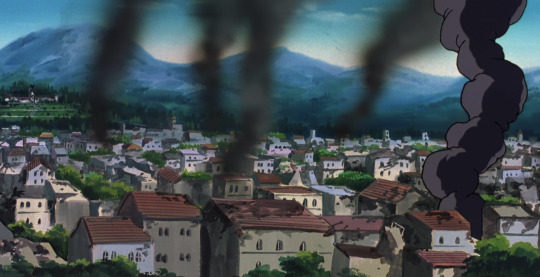
But the power of Relena’s ideals is not tied to the existence of the Sanc Kingdom– it’s not even tied to her, or the Peacecraft name. The naivety, the impossibility, of pacifism in an era defined by global military rule, is constantly reiterated, and yet it does not disappear.
Even as the bottleneck of war grows tighter and the violence between the ever-fragmenting world powers continues to escalate, the majority of people bearing witness to these horrors look to an alternative that offers hope, as practiced and advocated by a brave girl facing impossible odds.
The more pitched the violence becomes, the louder its perpetrators shout that peace is impossible, while to the people suffering its effects, the more outrageous and unnecessary that violence is revealed to be. The ones waging the wars seem to be the ones generating new reasons for them, their excuses becoming increasingly absurd, their justifications transparently thin.
Is it really so absurd or unreasonable by comparison, to take part in an actionable plan for peace?
“I’m aware that my views may appear to be a little naive to some people, but I wonder why people battle if everyone agrees that it’s foolish to do so? I don’t think that we’re too far from the answer.”
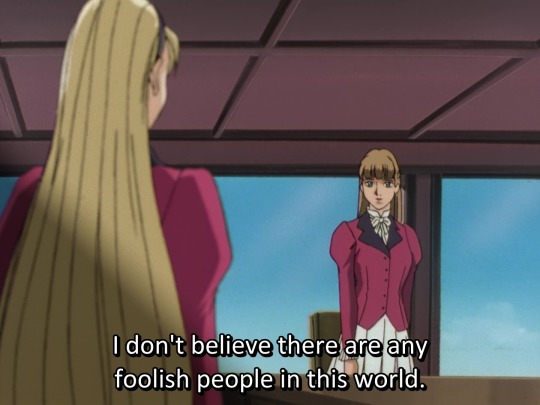
#Gundam Wing#Relena Peacecraft#Sanc Kingdom#After Colony#Gundam Wing Meta#Dorothy Catalonia#Romefeller Eyebrow Brigade#gundam wingtionary#wing watcher's toolkit#parsing post#i can't believe this entry is finally done hallelujah i'm free
81 notes
·
View notes